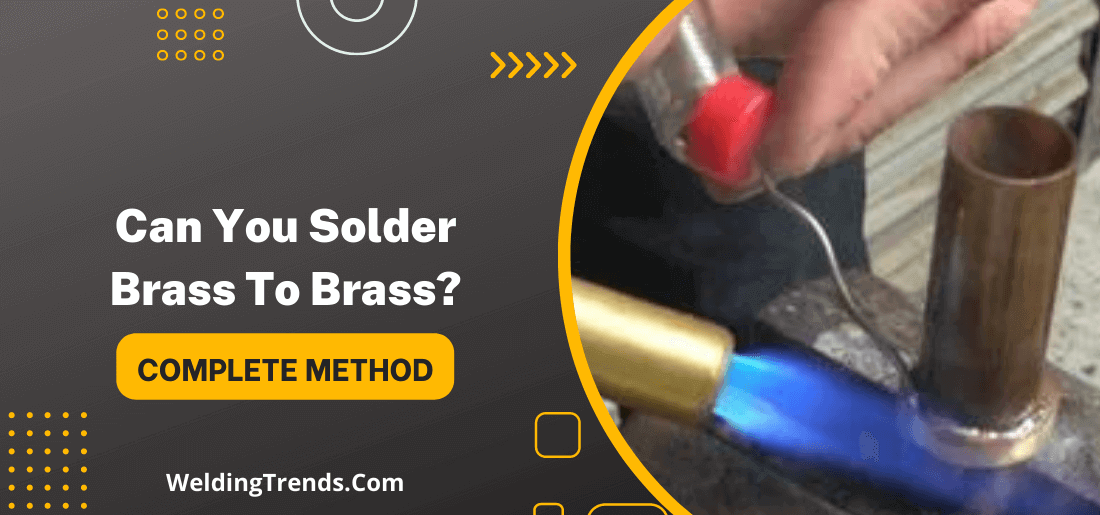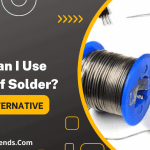Can you solder brass to brass? This is a question that many people may ask and the answer is yes, you can solder brass to brass. You just need to use the right type of solder and make sure that both pieces of brass are clean and free of any debris or oxides. But there are a few things you need to know before you try it
In this blog post, I will discuss the things that you need to know before soldering brass to brass. Stay tuned!
How to solder brass to brass?
The first thing you need to do is make sure that both pieces of brass are clean. Any dirt or debris on the surface of the brass will prevent the solder from adhering properly. You can clean the brass with a mild soap and water solution, or you can use a brass cleaner.
Once the brass is clean, you will need to apply flux to both pieces of metal. Flux helps to remove any oxides on the surface of the metal and allows the solder to flow evenly over the joint. You can purchase flux at most hardware stores.
Next, you will need to heat both pieces of brass with a soldering iron. The goal is to get the brass hot enough so that the solder will flow freely, but not so hot that it burns the flux. Once the brass is heated, touch the solder to the joint and allow it to flow evenly over the surface.
Finally, allow the joint to cool before handling. Once it is cooled, you can test the joint to make sure that it is strong and secure.
Now you know how to solder brass to brass! This simple process can be used to create strong and durable joints between two pieces of brass. Just be sure to follow the steps carefully and use the proper flux and solder.
Benefits of soldering brass fittings instead of using screws or bolts?
There are several benefits to soldering brass fittings instead of using screws or bolts.
- Soldered joints are stronger and more durable than screw or bolt connections.
- They are also less likely to leak, making them ideal for plumbing applications.
- Also, soldered joints are less likely to vibrate loose over time, making them ideal for use in applications where vibration is an issue.
- Finally, soldered joints are less likely to corrode over time, making them a good choice for outdoor applications.
So if you need a strong, secure and leak-free connection, soldering brass is the way to go.
Dangers associated with soldering brass fittings and how can you avoid them?
Yes, there are some dangers associated with soldering brass fittings. The most common danger is exposure to lead fumes. Lead is a toxic metal that can be harmful if inhaled. To avoid this danger, make sure that you work in a well-ventilated area and use a respirator or dust mask if necessary.
Another danger is burning. The soldering iron and the solder itself are both very hot and can cause serious burns if you’re not careful. Be sure to use caution when handling the soldering iron and the hot solder.
Finally, there is a danger of electrical shock. This can occur if you touch the soldering iron on a live electrical wire. To avoid this, always unplug the soldering iron before touching it on any metal surface.
By following these simple safety precautions, you can avoid the dangers associated with soldering brass fittings.
Tips for ensuring a successful solder joint between brass components
Here are a few tips to ensure a successful solder joint between brass components:
- Make sure the surfaces to be soldered are clean and free of any oxide film. Use a mild abrasive such as sandpaper or a steel wool pad to remove any oxidation.
- Apply a generous amount of flux to both surfaces. This will help the solder flow evenly and prevent it from drying out too quickly.
- Use a soldering iron with a tip that is the appropriate size for the joint. Too much heat can cause the brass to warp or discolor.
- Apply the solder to the joint, not the iron. Touch the solder to both surfaces of the joint, then remove the iron and allow the joint to cool.
- Inspect the joint to make sure there are no voids. If necessary, apply additional solder until the joint is filled.
- Allow the joint to cool completely before handling. Otherwise, you risk damaging the soldered connection.
With these tips in mind, you should be able to create a strong and reliable solder joint between brass components.
Can solder be used to fix other problems with brass fittings such as leaks or stripped threads?
Yes, in most cases solder can be used to fix leaks or stripped threads in brass fittings.
- First, clean the area around the leak or strip the thread with a wire brush.
- Next, apply a thin layer of flux to the area.
- Then, place a small amount of solder onto the area and heat it with a soldering iron until the solder melts and flows into the leak or stripped thread.
- Allow the area to cool and then test it to make sure the leak has been fixed or the thread is no longer stripped.
FAQs – brass to brass Soldering
What solder will stick to brass?
Different types of solder will have different results when used on brass. For example, lead-based solder will not adhere well to brass, while tin-based solder will create a stronger bond.
A silver-based solder is also an option for soldering brass, but it is more expensive than other types of solder. If you are unsure about which type of solder to use, you can consult a professional solderer for advice.
How strong is a brass solder joint?
Many factors can affect the strength of a brass solder joint, including the type of metal being used, the thickness of the metals, the cleanliness of the surfaces to be joined and the soldering method used. In general, however, brass is a very strong metal and solder joints made with brass tend to be very strong as well.
Will soldering iron melt brass?
No, soldering iron will not melt brass. Brass has a melting point of around 1700 degrees Fahrenheit, which is well above the maximum temperature that most soldering irons can reach. Therefore, you can safely use a soldering iron on brass without worrying about melting it.
Final Words
Yes, brass can be soldered to brass. It is a difficult process and requires the use of a flux, but it can be done with the right tools and techniques.
By following the tips in this post, you should be able to solder your brass pieces with ease. Have fun experimenting with this process and see what beautiful creations you can come up with!
If you are not careful, you may end up with a botched job that is difficult to repair. Brass is a popular choice for metalworking projects because it is strong and easy to work with. However, when joining two pieces of brass together, it is important to use the best techniques and equipment to get a lasting bond.




